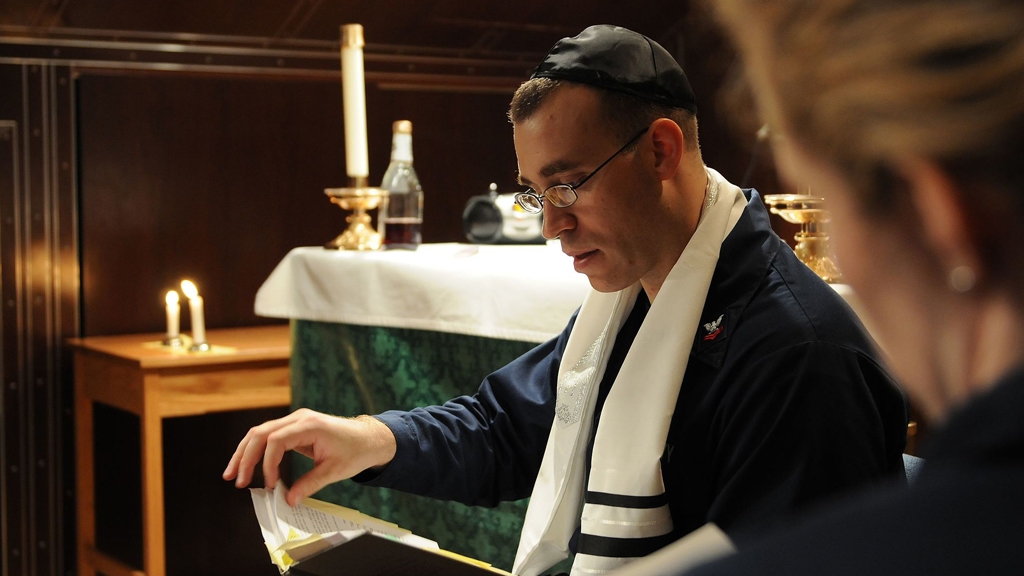The Talmud teaches us that Shabbat “outweighs the whole of the Torah and he who observes it has all his sins forgiven.” In the early twentieth century, many American Jewish workers faced a choice between keeping Shabbat and keeping their jobs. Almost no employers–even Jewish employers–honored Saturday as a day of rest. Only in the late 1920s, when a coalition of rabbis joined with labor unionists to fight for a five-day workweek, did the conflict between observing Saturday as the Sabbath and retaining one’s employment begin to resolve.
American history is replete with efforts to promote observance of Sunday, the Christian Sabbath, as a national day of rest. Beginning in the early 1800s, Protestants who advocated for Sundays as a day strictly for religious observance lobbied for, and in some states obtained, “blue laws” prohibiting liquor sales and amusements such as horse racing, railroad excursions, parades and other activities that competed with church attendance. As a small minority, Jewish businesses and workers had little choice but to conform to Sunday as their day not to work.
In 1925, Rabbi Israel Herbert Levinthal observed, “If we see Jewish life crumbling before our very eyes in America it is mainly because of the fact that we have lost our Sabbath.” Rabbi Bernard Drachman, leader of the Union of Orthodox Rabbis, advocated that Jewish laborers be afforded the opportunity to keep Shabbat on Saturday and that Jewish shop owners be allowed to close on Saturday and open on Sunday. Industrialists responded that gross industrial inefficiencies would result if Jewish employees took off Saturday while Christians took Sunday. Non-Jewish retailers and small businessmen opposed Jewish-owned business openings on Sunday because it would create an unfair advantage for Jewish businessmen. Protestant Sabbatarians, of course, declined to give Jewish Sabbath observance equality with their own. Rabbinical efforts to promote laws declaring Saturday a day without labor and permitting Sunday openings for Jewish storeowners were easily defeated, even in New York, New Jersey, and other states with significant Jewish populations. State courts also refused to overturn the blue laws, defining them as public health measures rather than First Amendment issues. In some cities, the police targeted Jewish stores that opened on Sundays.
As early as 1910, Rabbi Drachman had argued that the solution to the Shabbat problem was for both Saturday and Sunday to be observed as days of rest by both Jews and Christians. Labor unions in which Jews were heavily represented, such as the New York Ladies’ Garment Workers’ Union and the Amalgamated Clothing Workers, had already been advocating for a 40-hour, 5-day work week. They did so on economic, not religious, grounds. In the mid-1920s, when the rabbis joined the union leaders to promote Saturday as a day of rest, they finally made some headway.
In 1924, 50,000 members of the New York Ladies’ Garment Workers’ Union went out on strike for the 40-hour/5-day week. In 1926, almost 100,000 clothing trades’ workers in New York and Philadelphia struck for a shorter week; the furriers stayed out 17 weeks and won. By 1927, according to the Bureau of Labor Statistics, the 5-day workweek had become “practically the rule in trade agreements in the [predominantly Jewish] clothing industry.”
Rabbis encouraged these developments and hoped to spread them to other industries. Rabbi Levinthal, who was Orthodox, wrote, “I can see but one way to save the Sabbath for the Jew, and that is through the establishment of the five-day week.” Broadening his appeal to include non-religious Jews and other labor elements, Levinthal added, “I would favor the five-day week even if I were not interested in preservation of the Jewish Sabbath. I would favor it because it would add health and strength to the American people. It would promote the home and home life, giving the father an added opportunity to become more intimately acquainted with . . . his children.”
William Green, leader of the American Federation of Labor, echoed Levinthal’s argument. “There must be a progressive reduction of the hours of labor,” Green wrote, “so that men and women can have time to rebuild their exhausted physical energies . . . in the highly specialized process of modern industry, where speed and monotony tax physical existence to the utmost.” In 1927, Reform Rabbi Abba Hillel Silver raised Green’s argument to the spiritual level. Silver offered Shabbat as an antidote to America’s “philistine,” work-addicted, consumption-oriented culture. For Silver, Shabbat was a “consecrated covenant between God and man . . . much more than mere relaxation from labor. It is a sign and symbol of man’s higher destiny.” He urged each American to say, “I have a soul and must give it time, energy and interest.” Shabbat was that opportunity.
Today, the 5-day workweek is widespread; most blue laws have crumbled, even if liquor stores remained closed on Sundays. Other types of retail establishments commonly open every day of the year, including July 4th and Christmas, much less Rosh Hashanah and Yom Kippur. Jewish business owners thus compete on an even playing field as Americans of all religions can legally shop on both Saturdays and Sundays. The campaign for equivalence between Christianity and Judaism in the marketplace succeeded. One wonders, however, if rabbis Levinthal, Drachman, and Silver would consider the current secularization of the Jewish Shabbat and the Christian Sabbath progress.
Chapters in American Jewish History are provided by the American Jewish Historical Society, collecting, preserving, fostering scholarship and providing access to the continuity of Jewish life in America for more than 350 years (and counting). Visit www.ajhs.org.
Sign up for My Jewish Learning’s RECHARGE, a weekly email with a collection of Shabbat readings and more to enhance your day of rest experience.
Rosh Hashanah
Pronounced: roshe hah-SHAH-nah, also roshe ha-shah-NAH, Origin: Hebrew, the Jewish new year.
Shabbat
Pronounced: shuh-BAHT or shah-BAHT, Origin: Hebrew, the Sabbath, from sundown Friday to sundown Saturday.
Talmud
Pronounced: TALL-mud, Origin: Hebrew, the set of teachings and commentaries on the Torah that form the basis for Jewish law. Comprised of the Mishnah and the Gemara, it contains the opinions of thousands of rabbis from different periods in Jewish history.
Torah
Pronunced: TORE-uh, Origin: Hebrew, the Five Books of Moses.



